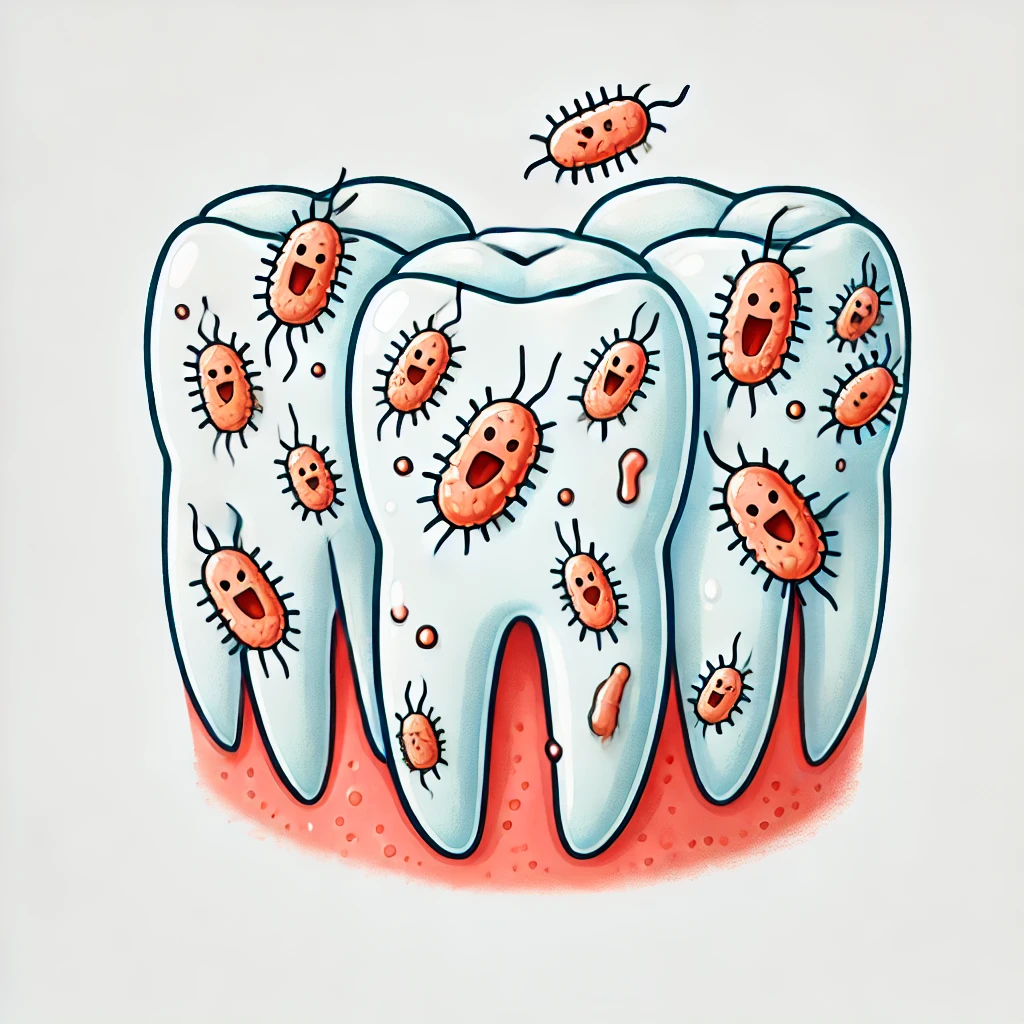How Cavities Form: Bacteria, Causes, and Interesting Facts
Cavities are one of the most common dental issues affecting people worldwide. They are a slow-developing process that can lead to serious health problems if not treated promptly. This article will delve into how cavities form, what types of bacteria cause them, and other important information that will help you understand and prevent this troublesome issue.
What is a Cavity?
A cavity is the decay of the hard tissues of the tooth caused by the demineralization of tooth enamel due to acids. These acids are produced by bacteria in the mouth that feed on sugars in your diet. Cavities start as small white spots on the surface of teeth, but if left untreated, they can spread deeper into the tooth, causing pain, infection, and in extreme cases, tooth loss.
How Do Cavities Form?
The formation of cavities is the result of a complex process involving several stages:
- Plaque and Bacteria: A thin film known as dental plaque constantly forms on your teeth. This plaque contains bacteria, which are a natural part of the oral microbiome. Plaque builds up particularly in areas that are not cleaned well, such as between the teeth or in hard-to-reach areas.
- Acids from Bacteria: The bacteria in plaque metabolize sugars from food and convert them into acids. These acids gradually dissolve the minerals in tooth enamel, leading to demineralization.
- Demineralization of Enamel: When acids act on the enamel long enough, it becomes weakened and starts to break down. This process begins on the tooth surface and gradually spreads to deeper layers, including the dentin (the harder layer beneath the enamel) and possibly even the pulp.
- Progressive Decay: If the process is not halted, the decay continues to deepen. In advanced stages, it can reach the pulp, causing severe pain and potentially leading to infection or abscesses.
What Bacteria Cause Cavities?
Several types of bacteria play a key role in the development of cavities. The most significant include:
- Streptococcus mutans: This bacterium is considered the primary cause of cavities. Streptococcus mutans produces large amounts of acid when metabolizing sugars, leading to rapid decay.
- Lactobacillus: These bacteria are also associated with cavities, particularly in the later stages. Lactobacillus can survive in acidic environments, which increases the risk of further tooth damage.
- Actinomyces: These bacteria are often found in the spaces between teeth and around the gums. They contribute to plaque formation and can cause gum inflammation and cavities in these areas.
Factors That Influence the Formation of Cavities
The formation of cavities is influenced by several factors that can either accelerate or slow down the process:
- Diet: A diet high in sugars and acids (e.g., sweets, sodas, juices) increases the risk of cavities. Sugars provide nutrients for bacteria that produce acids.
- Oral Hygiene: Poor oral hygiene, such as irregular brushing or improper brushing techniques, leads to plaque buildup and subsequent cavity formation.
- Fluoride: Fluoride helps strengthen tooth enamel and increases its resistance to acids. People who use fluoride toothpaste or have access to fluoridated water have a lower risk of developing cavities.
- Saliva: Saliva plays a crucial role in protecting teeth. It helps neutralize acids in the mouth and contains minerals that can remineralize enamel. People with reduced saliva production (dry mouth) are at higher risk of cavities.
- Genetics: Some genetic factors can influence susceptibility to cavities. This may include genetic variations in saliva production, the composition of the oral microbiome, or the shape and structure of the teeth.
Prevention of Cavities
Prevention is key in the fight against cavities. Here are some proven practices that can help:
- Regular Brushing: Brushing your teeth twice a day with fluoride toothpaste helps remove plaque and protect your teeth from acids.
- Using Dental Floss: Dental floss or interdental brushes help remove plaque from between the teeth, where a regular toothbrush cannot reach.
- Limiting Sugar Intake: Reducing the consumption of sugary foods and drinks lowers the amount of sugar that bacteria in the mouth can metabolize into acids.
- Regular Dental Visits: Preventive check-ups with your dentist help detect early cavities and allow for quick treatment.
- Using Fluoride Products: In addition to fluoride toothpaste, fluoride mouthwashes or special fluoride gels can be used to strengthen enamel.
Interesting Facts About Cavities
- Cavities Are as Old as Humanity: Archaeological findings show that cavities have plagued humans for thousands of years. The earliest records of cavity treatment date back to ancient Egypt.
- The Most Common Chronic Disease: Cavities are the most widespread chronic disease globally, affecting people of all ages.
- Cavities Can Be Contagious: The bacteria that cause cavities can be transmitted between people. For example, sharing utensils or kissing can transfer Streptococcus mutans.
- Cavities and Overall Health: Untreated cavities can lead to serious health issues, including infections, abscesses, and even heart disease if the infection spreads to the bloodstream.
Conclusion
Cavities are a complex process that involves the interaction between bacteria, acids, tooth enamel, and other factors. Prevention and early treatment are key to maintaining healthy teeth and preventing complications associated with cavities. Regular oral hygiene, a healthy diet, and regular dental visits can significantly reduce the risk of developing cavities and contribute to long-term dental health.
